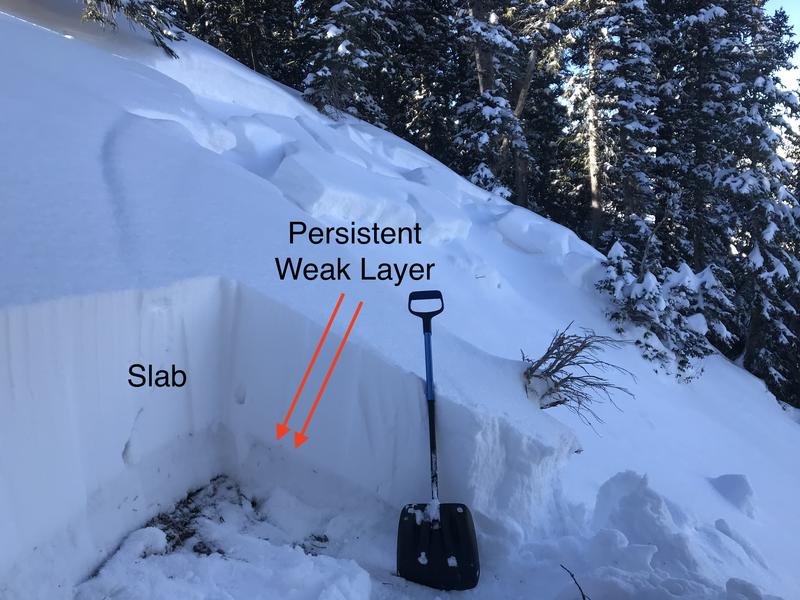The snowpack is pretty black and white right now (sorta like life and death). The top photo shows a picture that was taken yesterday on a due south facing slope at 10,000' in elevation. The bottom photo shows a picture that was taken on a north facing slope at 10,000' in elevation. North vs. South. Do you notice anything different?
The bottom photo: has a large stripe of grey-ish looking snow, sitting just above the ground. This is what we call a persistent weak layer. It's a layer of old, sugary, faceted snow. The problem with faceted snow is that it's very angular, and it doesn't like to bond to the surrounding snow grains. Once this faceted snow becomes loaded with a slab (stronger snow) it produces very large and destructive avalanches. Slab avalanches are the main killer of backcountry riders and this type of avalanche problem is serious. Continue to avoid all avalanche terrain (slopes steeper than 30° degrees) in the mid elevation northwest through east & upper elevation west through southeast facing terrain. Tracks on the slope are not an indicator of stability.
The top photo: Shows south facing terrain had all the old snow burned off before the Thanksgiving storm leaving us with snow on dirt. As you can see there is no persistent weak layer just above the ground and offers much safer riding conditions. Wondering what that thin line in the middle of the snowpack is? well, it's a suncrust that was formed on the 25th of Novemeber. I was able to propagate a crack just above the crust in my snowpit tests yesterday. Although, this result made me scratch my head - we need more information. It's something to keep in mind if you're planning on hitting steep committing southerly facing terrain.
Top photo: South facing slope, 10,000' in elevation. (no faceted snow).
Bottom Photo: North facing slope, 10,000' in elevation. (Weak and Faceted).












